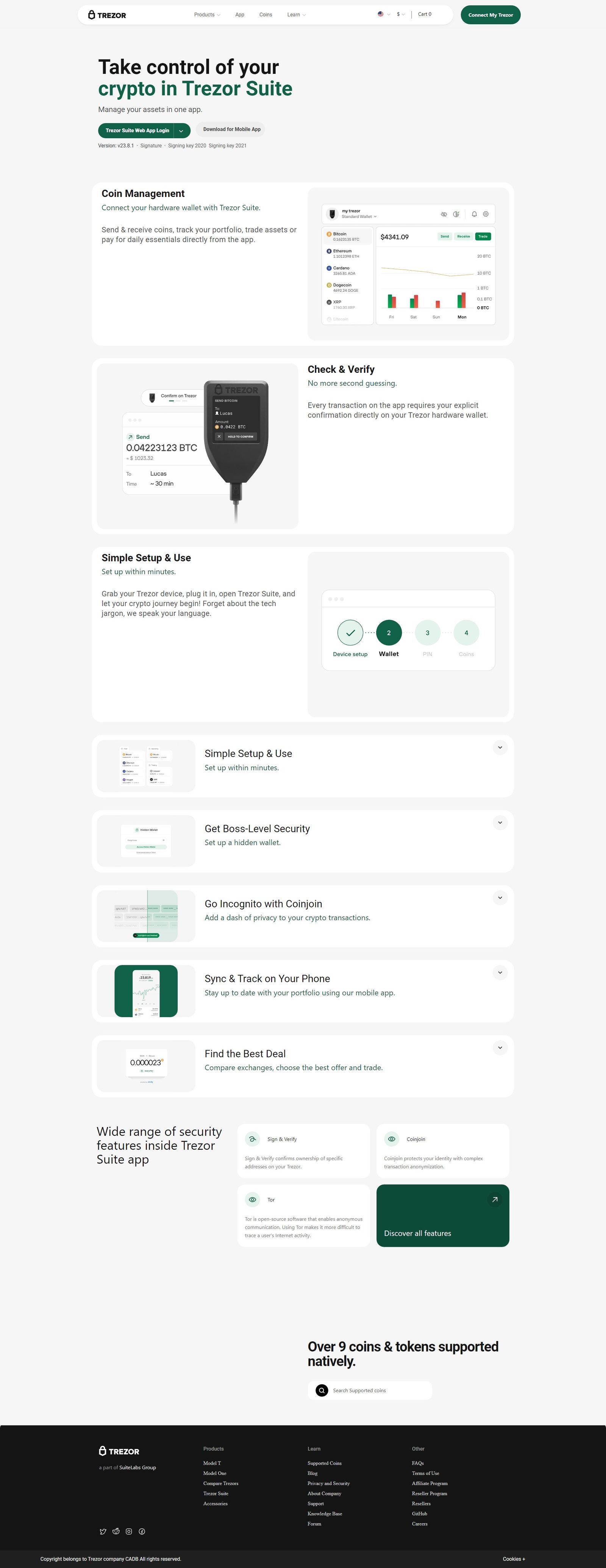
What is Trezor Bridge?
Trezor Bridge was developed by the team behind Trezor to act as a “bridge” between your Trezor hardware wallet device and your computer/browser. It handled tasks like USB communication, device detection, and encrypted data exchange — so you could manage your crypto without special browser plugins. Google Sites+3GitHub+3Homebrew Formulae+3
In simpler terms: plug in your Trezor device → Trezor Bridge runs in the background → your browser or desktop wallet talks to the device.
That means fewer manual steps, fewer compatibility headaches, and a smoother experience.
Why use Trezor Bridge?
Here are the key advantages:
Secure communication: Your private keys stay on the Trezor device; Bridge only passes encrypted commands. dfsd+1
Compatibility across browsers/OS: It helped link older firmware devices or browsers without full WebUSB support. GitHub+1
Hassle-free setup: Download once, open the installer, plug in your device — you’re ready. Many users reported that’s all it took. reddit.com
Easy Setup – Getting Started In Minutes
Visit the official Trezor website and download the installer for your OS (Windows/macOS/Linux). Trezor+1
Run the installer and follow the prompts. After installation, Bridge runs silently in the background.
Plug in your Trezor hardware wallet → open your crypto wallet interface (e.g., Trezor Suite or compatible wallet) → it should detect your device.
If your device is new: Follow the on-screen steps (PIN creation, recovery seed, firmware update) to finalize setup.
Now you’re up and running. Because the process is simple and swift, you’ll be “signed up in minutes”.
Important Update: Deprecation Notice
One key point: Trezor has deprecated the standalone Trezor Bridge. Trezor+1
What this means for you:
If you’re using the standalone Bridge version, you may want to uninstall it and instead switch to using the Trezor Suite (desktop or web)—which now includes integrated communication support. Trezor+1
Continuing to use the old Bridge may lead to compatibility issues, lack of updates, or support gaps. Trezor Forum
So while Trezor Bridge did its job for many years, the current recommendation is to use the integrated solution via Trezor Suite or via official supported methods.
FAQs
Q1: Do I still need to install Trezor Bridge?
A1: If you’re using the latest Trezor Suite (desktop or web) and a supported device/browser, you likely don’t need a separate Bridge install. The standalone version is deprecated.
Q2: Where can I download the installer?
A2: Always download from the official Trezor website or official GitHub repository to ensure authenticity and validity.
Q3: Will my private keys or seed words go through Bridge?
A3: No. The Bridge software only passes encrypted commands to the device. Your private keys remain securely on the hardware wallet. dfsd
Q4: I already have Bridge installed — should I uninstall it?
A4: Yes, if you are moving to Trezor Suite and no longer rely on any legacy workflows. The official guidance recommends uninstalling the standalone Bridge to avoid conflicts. auth-trzr-walet.pages.dev+1
Q5: What if my browser doesn’t detect the device after installing Bridge?
A5: Check the USB cable (data cable, not charge-only), try a different USB port (avoid unpowered hubs), disable antivirus/firewall temporarily, or check for browser extensions that may block USB access. Some users reported the Bridge prompt stopped working in some browsers. reddit.com
Final Thoughts
In today’s crypto world, you want tools that are secure, reliable and easy to use. Trezor Bridge provided exactly that for years: just a few easy clicks and you could be signed up in minutes.
While it’s now being phased out in favor of more integrated solutions, understanding what it does (and how to transition) is valuable. If you follow the steps above, you’ll have a streamlined setup and strong secure base for managing your crypto assets.
Trézór Bridge®™ | Secure Crypto